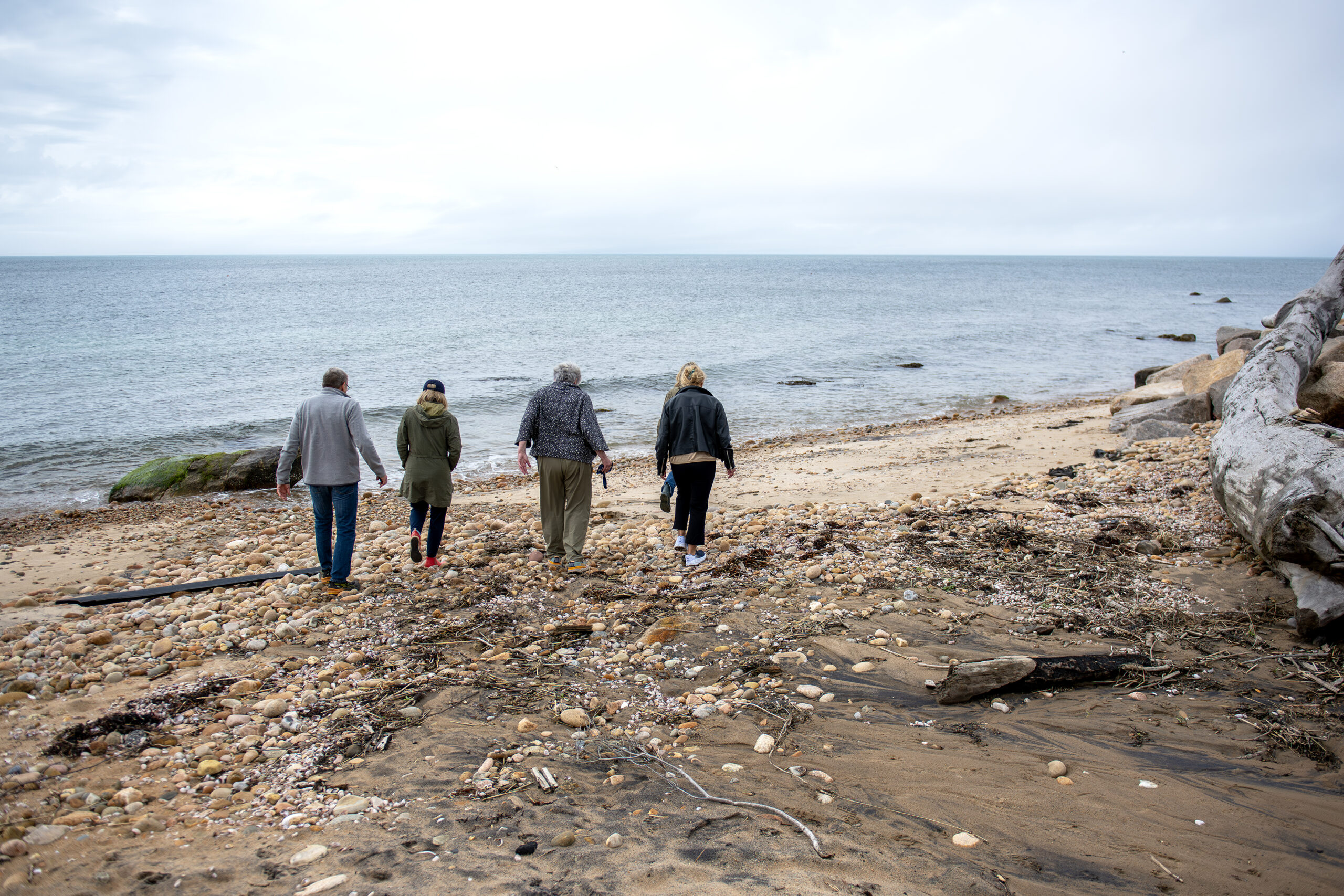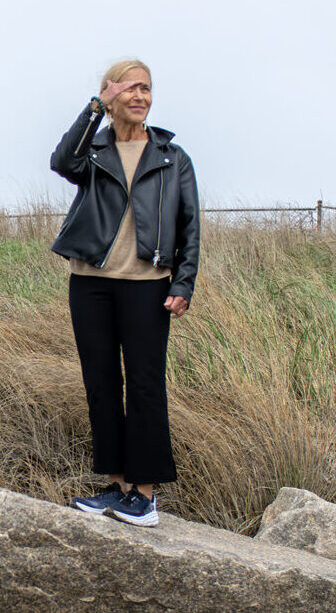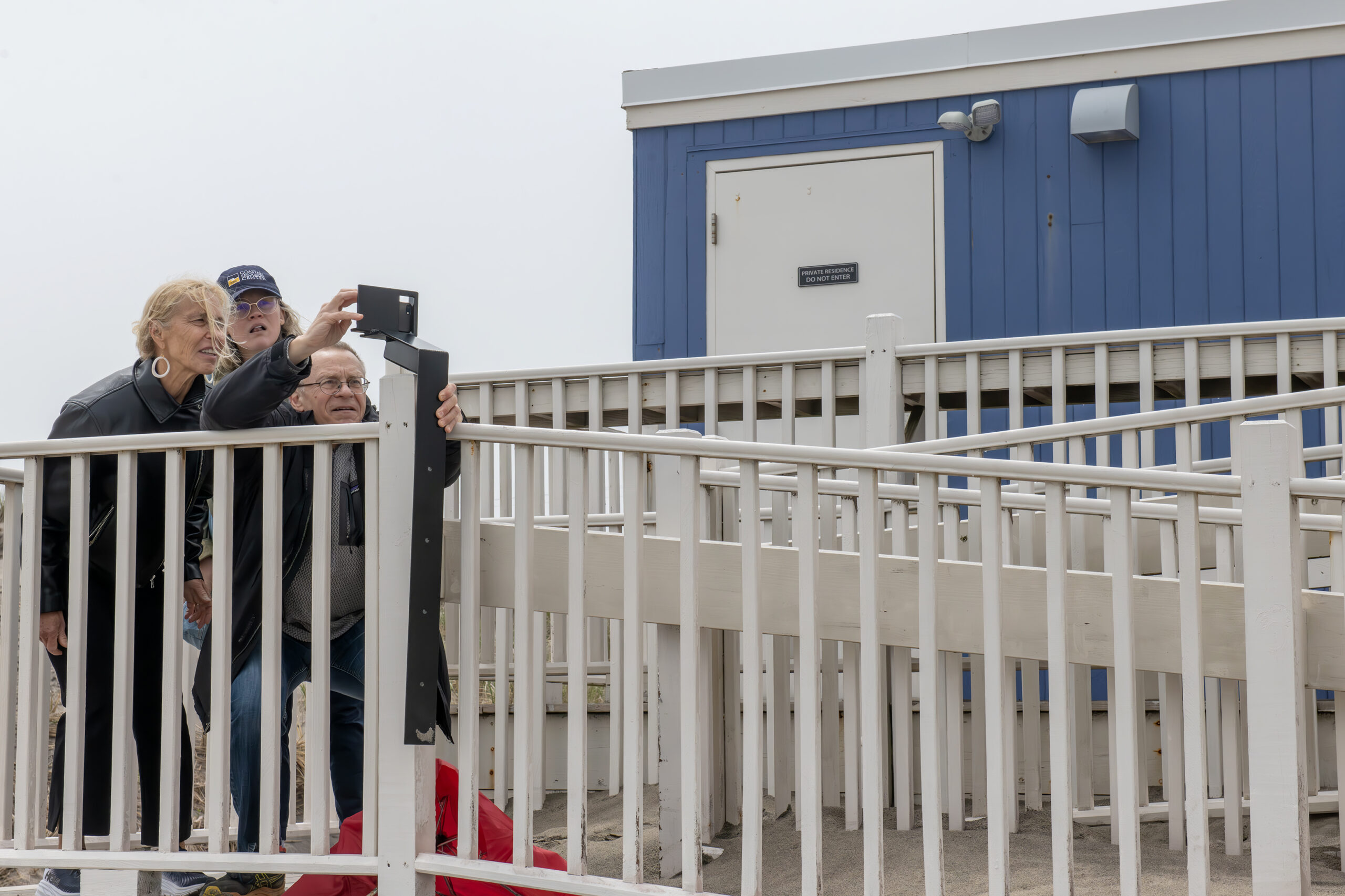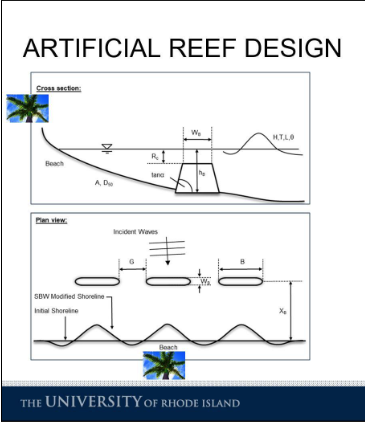Simulation shows wave energy dissipated and up to 70% less erosion at Crescent Beach

L-R Stephan Grilli, Eliza Berry, Judy Gray of the Block Island Coastal Resilience Committee, and Annette Grilli tour island areas facing erosion issues earlier this year.
Block Island’s geology is characterized by two distinct segments of rocky glacial moraines, connected by sandy barrier spits, making it particularly vulnerable to the impacts of storms, especially as sea levels rise.
Island residents, particularly members of the Block Island Coastal Resilience Committee, were interested in the potential for nature-based solutions to protect fragile barrier areas, such as Corn Neck Road, which is the only road connecting the two morainic blocks and essentially holds the island together.

Annette Grilli, a research professor of ocean engineering at the University of Rhode Island, overlooks Crescent Beach on Block Island.
Annette Grilli, a URI Ocean Engineering research professor, and her multidisciplinary , proposed investigating three methods of nature-based solutions: modeling the creation of an artificial reef to reduce the energy of waves as they approach the shore, dune restoration, and beach nourishment.
In the context of a Rhode Island Sea Grant-funded project, now in its second year, Grilli presented the results of the artificial reef simulation this spring to Block Island’s Town of New Shoreham Coastal Resilience Committee.
Grilli’s graduate student, Xiaoyi Zhao, modeled what would happen to two beaches along Corn Neck Road—Crescent Beach and Scotch Beach—under a Hurricane Sandy-like scenario if an artificial reef were deployed offshore.
The design of the reef is based on state-of-the-art methodology, utilizing numerical simulations that incorporate local wave climate, bathymetry, and sediment characteristics to simulate storm surge, wave propagation, sediment transport, and beach erosion.
The design and location of the reef are optimized to minimize beach and dune erosion. Promising designs, such as a segmented reef with two segments 500 meters in length and a crest width of 12 meters (slope 1/3), located 300 meters from shore, would dissipate 50%-85% of the wave energy and reduce erosion. Relative to what happened during Sandy, the model showed that such a reef would reduce erosion by about 70% at Crescent Beach and 30% at Scotch Beach.

URI Ocean Engineering professors Annette and Stephan Grilli, together with RISG/CRC’s Eliza Berry, scope out the best location to install a CoastSnap station at Fred Benson Town Beach on Corn Neck Road. The station, which will face Crescent Beach, helps document shoreline change through community-shared photos.

In year two, Grilli and the other researchers on the team from URI Ocean Engineering, professors Stephan Grilli and Malcolm Spaulding (emeritus); from the Coastal Institute at URI, Nathan Vinhateiro, geologist and research professor; from the RI Sea Grant/Coastal Resources Center at URI, Eliza Berry, coastal project manager; and from Eastern Connecticut State University, Bryan Oakley, professor of Environmental Earth Science—are looking at those additional methods of reducing erosion.
They are also collecting high-resolution data on the site morphology through remote sensing to develop a detailed, three-dimensional, current site topography, which is essential for verifying the accuracy of the model.
Grilli will again present the findings to the Coastal Resilience Committee, and those will be made available to other communities at high risk from coastal erosion as well.
About this project:
Monitoring and Numerical Simulations of Natural and Nature-Based Solutions to Coastal Erosion on Block Island
Funded by Rhode Island Sea Grant, this project is led by PI Annette Grilli (URI) with co-investigators Stephen Grilli, Christopher Baxter, Nate Vinhateiro (URI/Coastal Institute), and Brian Oakley (ECSU).
Initiated at the request of Block Island residents, the team is exploring nature-based solutions to protect critical infrastructure from erosion and sea level rise. Using advanced hydro-morphodynamic modeling, stakeholder engagement, and crowd-sourced imaging (via CoastSnap), they aim to evaluate strategies for safeguarding vulnerable sections of Corn Neck Rd—advancing understanding of how natural and nature-based approaches perform in high-energy coastal environments.
